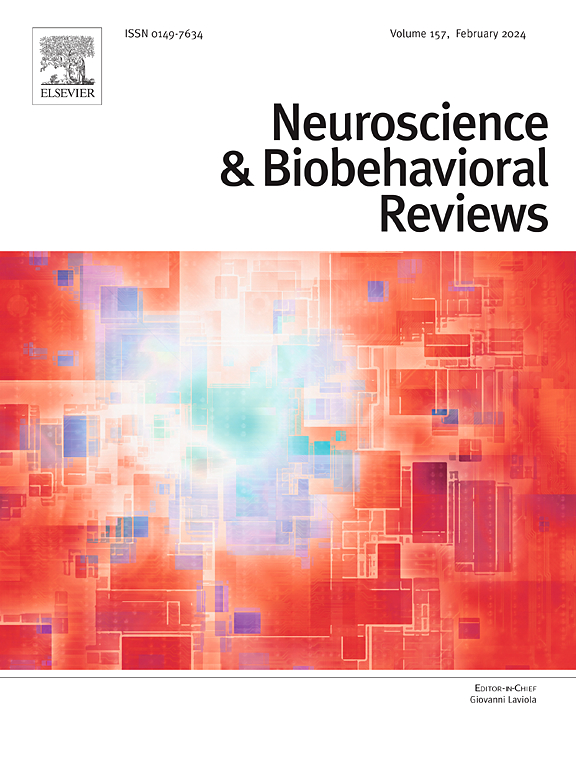身体自我意识神经相关的系统回顾与元分析。
IF 7.9
1区 医学
Q1 BEHAVIORAL SCIENCES
引用次数: 0
摘要
对自己身体的感觉,也被称为身体自我意识(BSC),是自我意识的一个重要方面,它使我们能够体验到我们自己的身体。先前的研究已经确定了平衡记分卡的不同组成部分(即身体所有权、代理感和自我定位),并分别研究了它们的神经相关性。然而,关于平衡计分卡涉及的大脑区域尚未达成共识,并且平衡计分卡的体验是否超出其组成部分的总和仍然未知。本研究旨在确定操纵BSC成分的神经相关性,以及它们共同的激活模式。我们对56项调查健康个体被操纵的平衡记分卡(主要是身体所有权和代理感)的神经影像学研究进行了多层次核密度分析,以确定他们各自的神经相关性,以及他们之间的共同激活。我们的分析显示,左侧运动前皮层、双侧后顶叶皮层和左侧枕叶皮层的激活导致身体所有权的改变,而代理感的改变涉及右侧颞顶叶连接、双侧下顶叶小叶、右侧额回、左侧中央后回和左侧脑岛。连接分析显示双侧后顶叶皮层、中央前回和颞枕顶叶交界处周围有激活。这些结果支持被操纵的平衡记分卡组成部分之间存在交互关系,进入自我识别和检测感官输入差异的领域。我们的研究结果指出,多感觉整合和自我归因过程在操纵平衡记分卡的体验中起着关键作用。本文章由计算机程序翻译,如有差异,请以英文原文为准。
A systematic review and meta-analysis on the neural correlates of bodily self-consciousness
The sense of one's own body, also referred to as bodily self-consciousness (BSC), is an important aspect of self-consciousness, that allows us to experience our body as our own. Previous research has identified the distinct components of BSC (i.e., body ownership, sense of agency, and self-location), and investigated their neural correlates separately. However, a consensus on the brain regions involved in BSC has not been found, and whether the experience of BSC goes beyond the sum of its components is still unknown. This study aims to identify the neural correlates of the components of manipulated BSC, as well as their shared patterns of activation. We conducted a meta-analysis employing multi-level kernel density analysis on 56 neuroimaging studies investigating manipulated BSC (primarily body ownership and sense of agency) in healthy individuals, to determine their neural correlates individually, as well as shared activations across them. Our analyses revealed activations in left premotor, bilateral posterior parietal, and left occipital cortices for altered body ownership, whereas altered sense of agency engaged the right temporoparietal junction, bilateral inferior parietal lobule, right frontal gyri, left postcentral gyrus, and left insula. The conjunction analysis revealed activations around the bilateral posterior parietal cortex, precentral gyrus, and temporo-occipito-parietal junction. These results support the presence of an interactive relationship between the components of manipulated BSC, tapping into the domain of self-recognition and detection of discrepancies across sensory inputs. Our findings point to a critical role of multisensory integration and self-attribution processes to the experience of manipulated BSC.
求助全文
通过发布文献求助,成功后即可免费获取论文全文。
去求助
来源期刊
CiteScore
14.20
自引率
3.70%
发文量
466
审稿时长
6 months
期刊介绍:
The official journal of the International Behavioral Neuroscience Society publishes original and significant review articles that explore the intersection between neuroscience and the study of psychological processes and behavior. The journal also welcomes articles that primarily focus on psychological processes and behavior, as long as they have relevance to one or more areas of neuroscience.

 求助内容:
求助内容: 应助结果提醒方式:
应助结果提醒方式:


